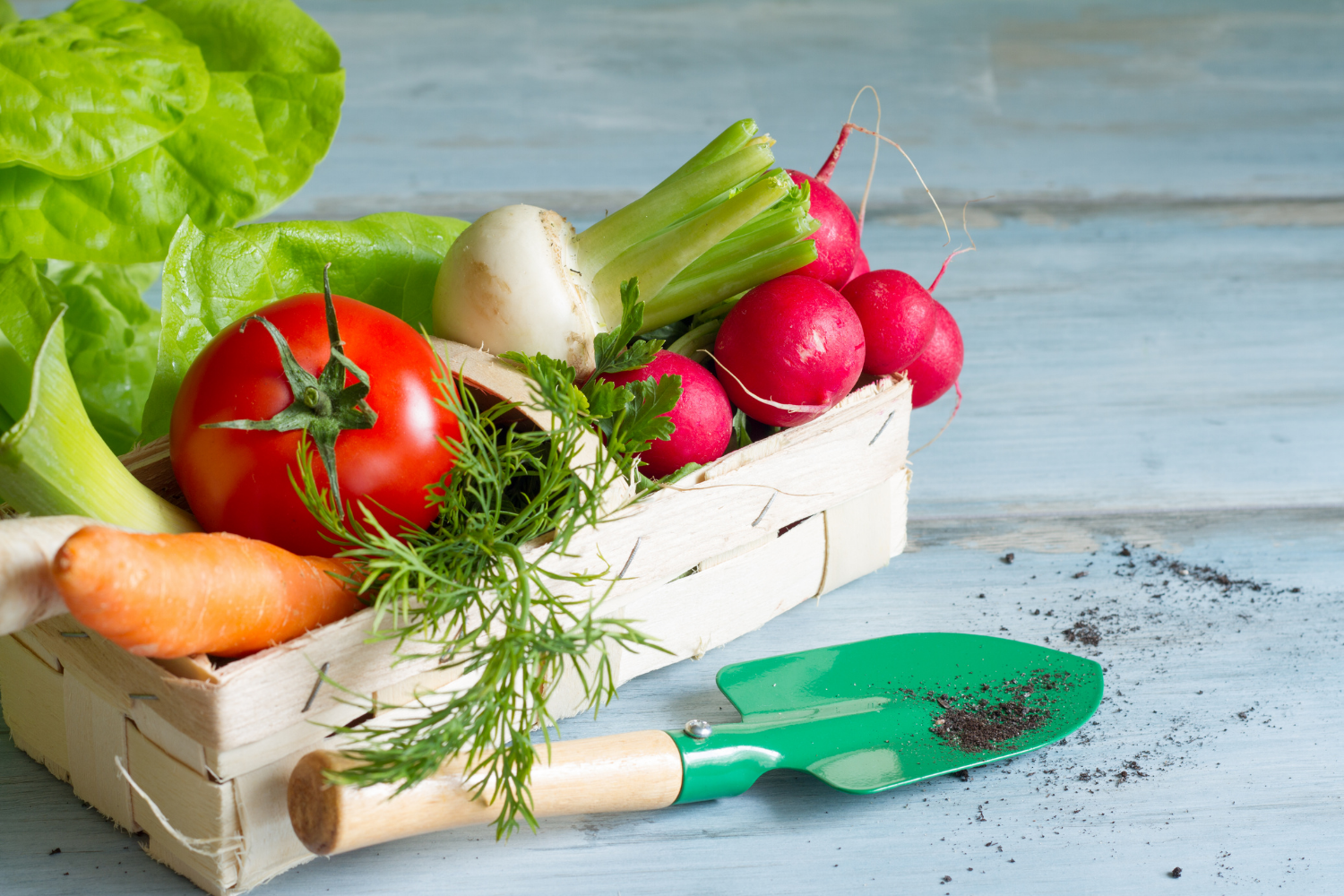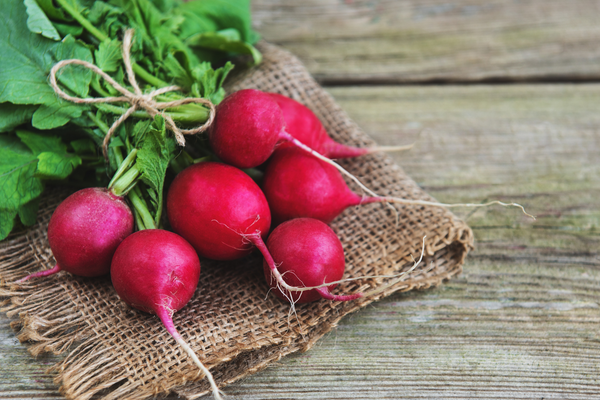
There are so many things to look forward to when it comes to spring gardening.
The weather is cooler, there are fewer mosquitoes, and it gives you an opportunity to get outside and enjoy some fresh air after you’ve been cooped up inside all winter long.
Ready to get started? Here are some spring vegetable gardening ideas to try for the most productive spring gardening experience ever.
What Vegetables Can I Plant in Early Spring?
Although there are many different kinds of vegetables you can plant in spring gardens - depending on where you live and what your growing conditions are like - these are some of the best options for gardeners to try.
Snow Peas
You can start just about any kind of peas in the early spring - but snow peas are infamous for their ability to tolerate the cold like a real champ!
These vegetables can be sown by seed directly into the garden as soon as the soil is warm enough to be worked. They germinate best when soil temperatures are between 50 and 60 degrees and aren’t bothered by a light spring frost.
Some great snow pea varieties include:
- Mammoth Melting Sugar
- Oregon Sugar Pod
- Golden Sweet
- Oregon Giant
Plant in the garden about four to six weeks before the last expected spring frost. When you plant, you may want to erect a trellis, fence, or garden netting that will give your plants some support as they climb.
Harvest them young, when the pods are still flat and before the peas inside have begun to swell and firm up.

Lettuce
Most spring gardens contain lettuce and other types of leafy greens. Lettuce is one of the easiest vegetables you can grow and it also matures quickly, making for a fast harvest and a rewarding spring gardening experience.
You can buy starter plants from your local nursery and transplant them into the garden, but it’s much easier and more cost-effective to start from seed.
Some of the best cold-tolerant varieties of lettuce to grow in a spring garden include:
- Brune d’Hiver
- Esmerelda
- Sunfire
- Vulcan
- North Pole
There are thousands of different types of lettuce you can grow. For a truly diverse bowl of salad, consider planting a few different types of seeds and plant them at staggered intervals. That way, you will have fresh salad greens all summer long!

Kale
Kale is a top-trending superfood that’s famous for the nutritional punch that it packs. It’s a great early spring vegetable to plant since it isn’t bothered by the cooler temperatures of spring.
Some awesome kale varieties to consider include:
- Red Russian
- Scarlet
- Vates Blue Scotch Curled
- White Russian
- King Kale
- Winter Red Kale
Sow your seeds directly into the soil as soon as the temperatures are higher than 40 degrees. Your seeds should be planted about half an inch deep and spaced an inch apart. Once they emerge, thin the seedlings to 6-8” apart unless you want to harvest baby greens (which, though delicious, are much smaller than the adult versions).

Radish
Radishes are easy to grow in the spring and, like lettuce, mature quickly - in some cases, as little as three weeks!
You should plant them in the early spring or very late in the fall, when temperatures are cool. If you plant radishes during the heat of the summer, there’s a good chance that they’ll end up tasting dense and woody.
A few types of radish varieties you might consider include:
- Watermelon Winter Radishes
- Daikon Radishes
- French Breakfast Radishes
- White Hailstone Radishes
As is the case with lettuce, you can sow a separate row of radish seeds every two weeks during the spring so that you can continue to harvest fresh roots while they are still small.

Broccoli
Broccoli isn’t the only member of the cabbage family that can be grown in the early spring. There are many others - including cabbage, cauliflower, Brussels sprouts, and the aforementioned kale, that can also be grown.
However, broccoli is a fan favorite in the garden - so while you can grow these other veggies in your spring garden, it’s broccoli that’s earned a spot on our round-up.
Broccoli plants require a bit more time to mature than the other plants on this list, so while you can grow it directly from seed, it’s better to plant starter plants that you either start from seed indoors yourself or buy from a nursery. This will give your plants plenty of time to mature before the weather gets too warm.
Some popular varieties of broccoli to grow include:
- Belstar
- Calabrese
- DeCicco
- Purple Sprouting
- Romanesco
- Emerald Crown
- Marathon
This is a plant that grows best when temperatures are in the 60s. If it’s much hotter than that, your plants may bolt (flower) and if it’s too cold, your plants can be damaged by a heavy frost. A light frost won’t harm these plants in the slightest, though.

How Many Vegetables Are Ready to Pick in Spring?
The five all-star vegetables listed above aren’t your only options for a spring garden. You can also grow any of the following plants:
- Cabbage
- Cauliflower
- Brussels sprouts
- Shelling peas
- Kohlrabi
- Swiss chard
- Spinach
- Asparagus
- Rhubarb









Some of these aren’t ready to be harvested in the spring, instead maturing in the early or late summer (or in the case of asparagus and rhubarb, not until the following year).
You can usually harvest lettuce, spinach, and radishes in the spring, though.
Spring Gardening Tips
Here are a few tips to help you be successful with your spring gardening - both this year and for many years down the road.
- Know Your Zone
Understanding the climate and weather where you live is essential to growing a thriving spring garden. Enter your zip code on the USDA Plant Hardiness chart to get an idea of when the average first and last frost dates are for your region. This will give you an idea of when it is safe to plant.
- Buy Quality Seeds and Seedlings
Don’t skimp on the inexpensive seed packets you can find lining the shelves of your local discount variety store. If you want a successful garden, choose quality seeds from a reputable company. Organic and heirloom are great options to consider!
- Watch the Forecast
Although the plants listed above are relatively hardy and can tolerate an errant frost, it’s still important that you keep a close eye on the forecast. While they are hardy, especially compared to more sensitive plants, that doesn’t mean that you should be planting when a blizzard is on the horizon.
Wait until the weather is consistently warm (above 50 degrees or so) unless you have a way to protect fragile seedlings.
- Get a Head Start
If you’re concerned that it’s still too cold to plant but you want to start growing as soon as possible, you can get a head start by growing your own seeds indoors.
There are all kinds of methods you can rely on to do this. You can buy premade starter kids that provide you with soil in an easy-to-plant container, you can purchase starter seedlings from nurseries, or you can simply sow seeds beneath a grow light indoors.
You can even start seeds early in a greenhouse if you’re lucky enough to have one!
This strategy works well for growing many types of crops, particularly if you are a gardener in an area with a short growing zone. You’ll get a jumpstart on the growing season since you won’t have to wait for the weather to warm up outside.
- Water and Fertilize Regularly
Many people forgo their regular watering and fertilizing routines when they are gardening in the early spring, incorrectly assuming that since the weather is cooler, they don’t need to provide any supplemental moisture.
Think again! Although your plants might not be as thirsty in March as they are in August, you still need to make sure you are giving them what they need.
- Don’t Stick to Just Annual Veggies
Don’t rely solely on annual vegetables to fill your garden with - there are also plenty of perennial vegetables, fruits, and even herbs you can grow!
Consider starting cold-tolerant herbs once the snow has melted (parsley is a good choice, along with many of the herbs in this pack). You can also plant perennial vegetables like asparagus, though you shouldn’t expect to get a crop until the second year of growth.
Long story short - get creative! There are all kinds of options out there.
Spring Gardening: Grow These Productive Veggies This Season
As you can see, there are all kinds of plants that grow well in a spring garden. You don’t have to wait until summer to start enjoying a bumper crop of tasty greens and other vegetables.
Start now - and you’ll be chowing down in no time.



